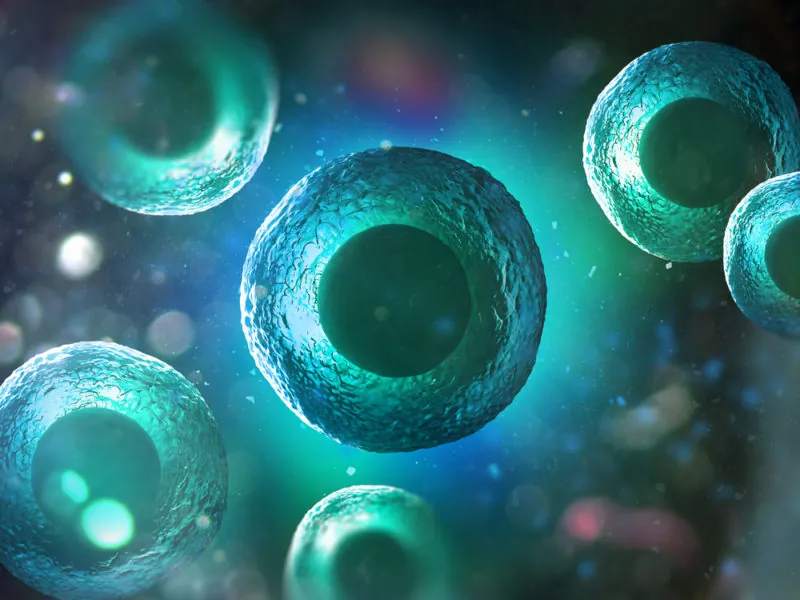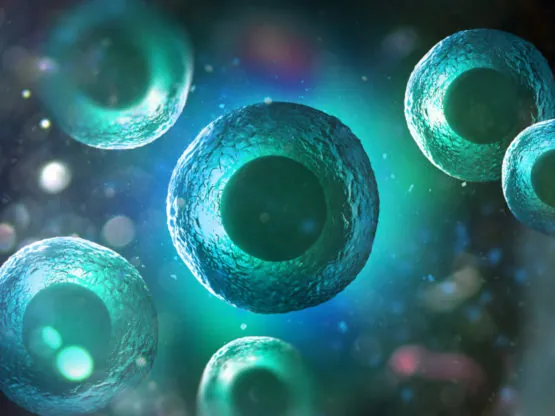Researchers from the University of Texas have discovered how NAD+ creation and consumption in cells is linked to glucose metabolism and their transformation from preadipocytes into adipocytes, or as most people know them, fat cells.
INTRODUCTION Nicotinamide adenine dinucleotide (NAD) is an essential small molecule that is involved in a variety of physiological and pathological processes. The oxidized form, NAD+, serves as a cofactor in metabolic pathways, as well as a substrate for various enzymes that consume it, such as the poly[adenosine diphosphate (ADP)–ribose] polymerases (PARPs) and sirtuins (SIRTs). PARPs and SIRTs cleave NAD+ into nicotinamide and ADP-ribose, resulting in the irreversible breakdown of NAD+. Therefore, the resynthesis of NAD+ is necessary for maintaining normal cellular functions. Increasing evidence has revealed that (i) reduced NAD+ levels result in altered metabolism and increased disease susceptibility and (ii) restoration of NAD+ levels can prevent disease progression. Thus, understanding NAD+ synthesis and catabolism is important for understanding physiological and pathological processes.
NAD+ regulates adipogenesis
Adipogenesis is a process of cell transformation, called differentiation, by which preadipocyte cells become adipocyte (fat) cells. The new study, published in the journal Science, shows how glucose is converted into fat and how NAD+ plays a key role in this process. During the study, the research team looked at why consuming too much glucose makes the body produce fat and results in weight gain.
Previous studies have demonstrated that NAD is a key molecule that plays a role in a myriad of cellular and pathological processes. The oxidized form, NAD+, has been shown to act as a cofactor in metabolic pathways and is consumed by a number of enzymes involved in gene regulation.
After NAD+ is consumed, it is broken down into nicotinamides and ADP-ribose; the researchers concluded that this means that NAD+ must be resynthesized following this in order for normal cellular functions to continue. This converges with previous studies, which suggest that NAD+ decline leads to changes in metabolism and an increased risk factor for some diseases; this typically happens as the result of aging, as NAD+ levels begin to fall.
With this in mind, the research team thought that cellular metabolism and gene regulation were potentially connected to NAD+ synthesis. They discovered evidence suggesting that compartmentalized NAD+ synthesis and the subsequent consumption are integrated with glucose metabolism and adipogenic transcription as part of the adipocyte differentiation process.
NAD+ synthesis acts as a mediator of PARP-1-regulated transcription during the differentiation of adipocytes, linking cellular metabolism and the adipogenic transcription process. During adipogenesis, nuclear NAD+ levels fall, causing the induction of NMNAT-2, the cytoplasmic NAD+ synthase. This increased level of NMNAT-2 then reduces the availability of NMN and leads to a reduction of nuclear NAD+ synthesis via NMNAT-1. The drop in NAD+ levels then results in decreased PARP-1 activity, which then reduces levels of inhibitory ADP-ribosylation of the adipogenic transcription factor C/EBPβ. Reduced ADP-ribosylation of C/EBPβ means that it is able to bind its target genes, thus promoting the differentiation of preadipocytes into adipocytes. In other words, a decline of NAD+ encourages an increase of preadipocytes turning into adipocyte fat cells.
The researchers found that directly decreasing NAD+ synthesis significantly reduced the activity of PARP-1 and increased adipogenesis. They also found that blocking the decline of NAD+ levels reduced adipogenesis and the creation of fat cells. Finally, supplying exogenous NMN to preadipocytes bypassed the competition to consume NMN between NMNAT-1 and NMNAT-2; this led to an increased level of nuclear NAD+ synthesis during the differentiation process, which increased PARP-1 activity and ultimately blocked adipocyte differentiation. In summary, providing higher amounts of NAD+ precursor NMN reduced the creation of fat cells.
Conclusion
This study shows that compartmentalized synthesis of NAD+ regulates the differentiation of adipocytes, a process that is critical for metabolic health, via transcriptional control. It also explains why a decline of NAD+ results in an increasing amount of fat cells and weight gain.
Literature
[1] Ryu, K. W., Nandu, T., Kim, J., Challa, S., DeBerardinis, R. J., & Kraus, W. L. (2018). Metabolic regulation of transcription through compartmentalized NAD+ biosynthesis. Science, 360(6389), eaan5780.



